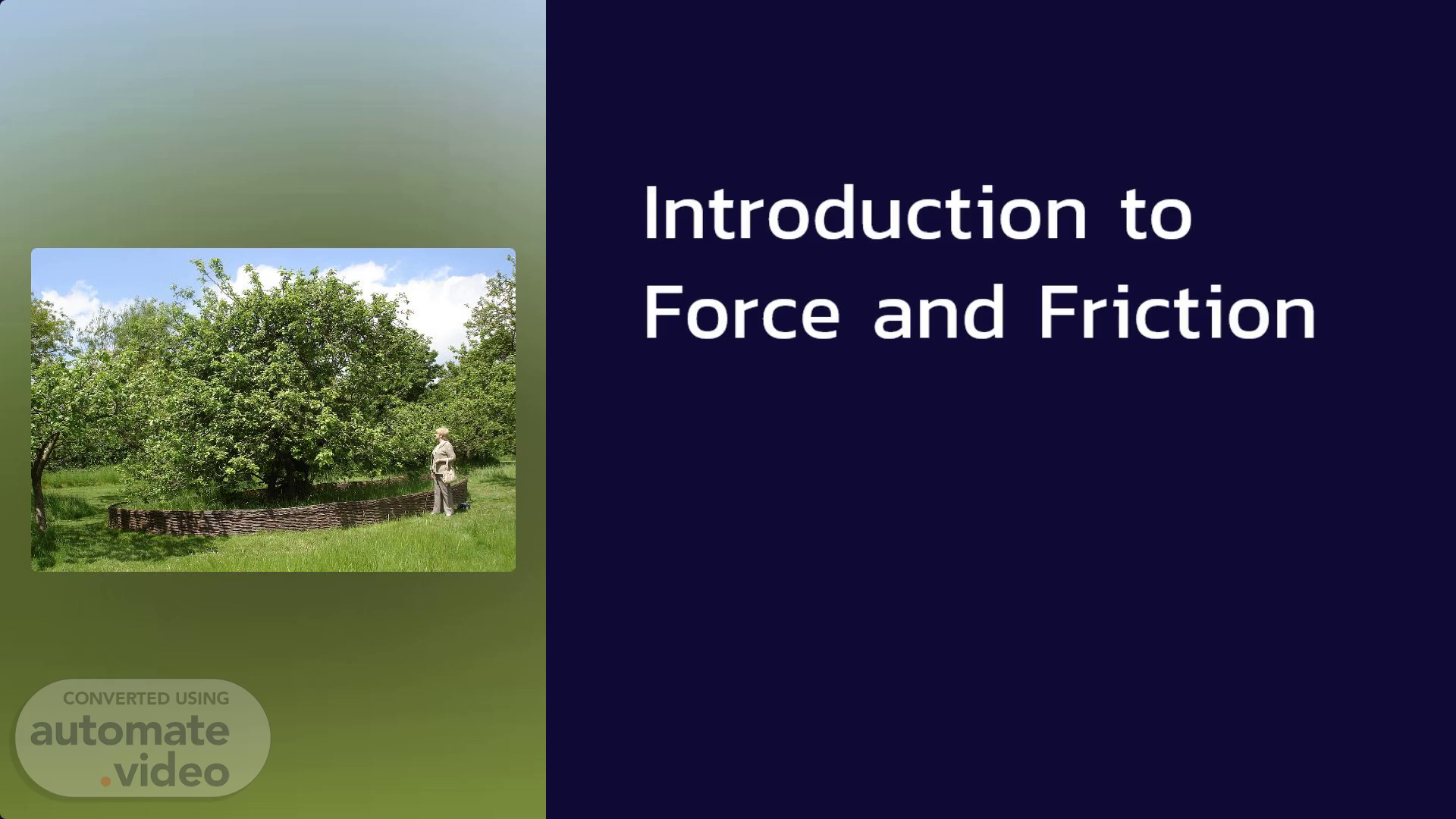
PptxGenJS Presentation
Scene 1 (0s)
Introduction to Force and Friction. Force and friction are fundamental concepts in physics that govern the motion of objects. This presentation will explore the nature of force, the types of forces, Newton's laws of motion, the concept of friction, factors affecting friction, and real-world applications of friction..
Scene 2 (20s)
Triangle of Forces Fl. What is Force?. 1. Definition.
Scene 3 (43s)
Types of Forces. Contact Forces. Forces that require direct physical interaction between two objects, such as friction, normal force, and tension..
Scene 4 (1m 5s)
(4) a) NOIIOL..N 40 MVI 0811-11 S,N01M3N (v). Newton's Laws of Motion.
Scene 5 (1m 33s)
Frictional Force 11 Pushing force Motion. What is Friction?.
Scene 6 (2m 4s)
2) Factors affecting friction :- Friction depends upon two factors. They are i) Nature of the surfaces in contact. ( The smoothness of the surfaces). ii) How hard the surfaces press together. Friction is less on a smooth surface. Friction is more on a rough surface..
Scene 7 (2m 39s)
APPLICATIONS OF FRICTION I.A simple action of holding a pen in our hand requires friction to act between these surfaces. i' 2. When a person walks, the feet pushes against the ground while friction from /#he ground prevents the motion Of the feet which in turn allowedusto move forward. 5. Friction causes heat and resulted i wear and tear in most machineries. Although this isinevitable poses as a problem in many situations..
Scene 8 (3m 18s)
=uuu dreomrblme.com ID 112128086 Yuri Korchmar. Conclusion.
Scene 9 (3m 35s)
Thank You.